Diving Regulators & Octopuses Guide
First stage
The first stage connects to the scuba tank and reduces the high pressure from the tank to an intermediate pressure for breathing. One top-rated first stage option is the Apeks DST First Stage, which features a balanced diaphragm design for excellent performance in cold water conditions. Its Environmental Sealing System prevents water and contaminants from entering, enhancing its durability. Another option, the Scubapro MK11 First Stage, offers a compact design ideal for travel and recreational diving. It incorporates a balanced diaphragm system for smooth airflow and an anti-freeze function to prevent freezing even in extreme cold environments. These reliable options are known for their durability and consistent performance, making them popular choices among divers.
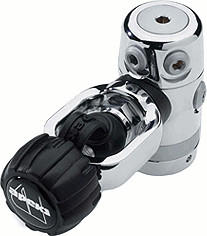
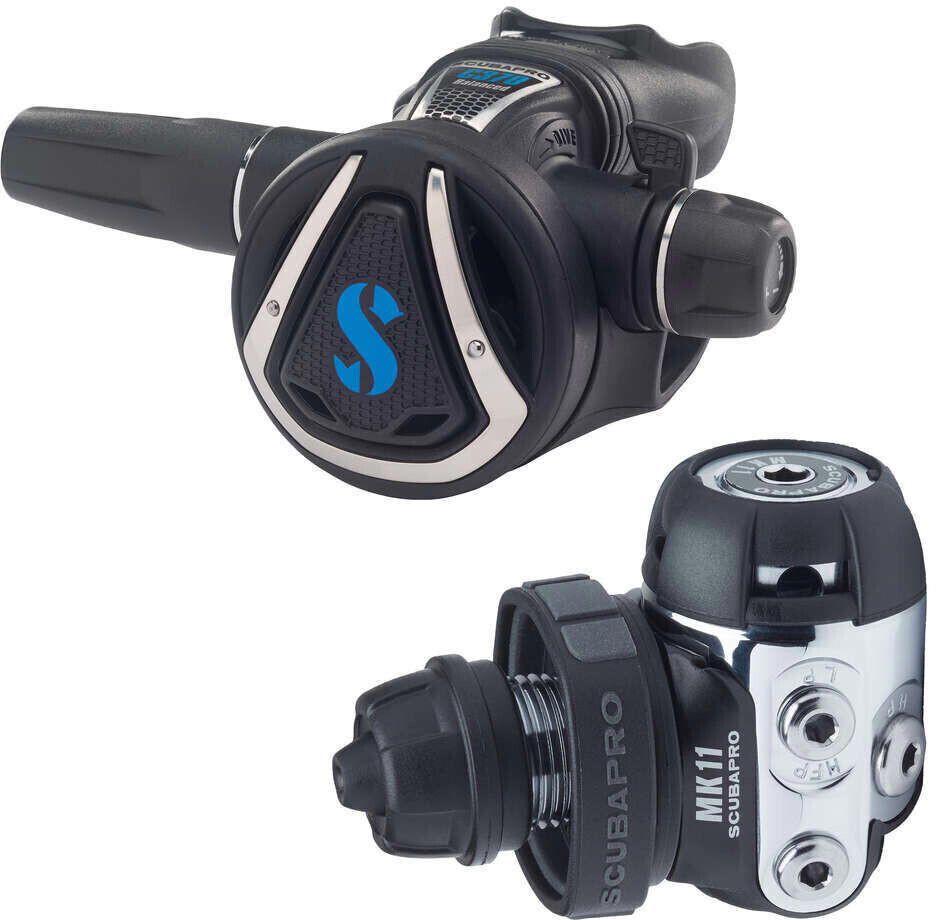

Second stage
Firstly, look for a regulator that offers excellent breathing ease and comfort. One great option is the Scubapro MK25 EVO/A700, which features a balanced piston design for smooth and effortless breathing. It has a user-adjustable inhalation effort and a downstream demand valve, allowing for precise control over the airflow. Another recommendation is the Aqua Lung Legend LX Supreme, which incorporates a high-performance pneumatically balanced second stage for optimum breathing comfort. It has a unique ergonomic design and an adjustable Venturi switch to enhance breathing comfort at deeper depths.
In terms of segmenting product options, there are a few categories to consider. Balanced piston regulators, such as the aforementioned Scubapro MK25 EVO/A700, are known for their durability and high performance. Another category is the dive computers integrated regulators, like the Suunto EON Core, which not only functions as a second stage regulator but also provides essential information on depth, dive time, and air consumption. For those on a budget, there are also affordable options available, such as the Cressi AC2/XS Compact that offers reliable performance at a more accessible price point.
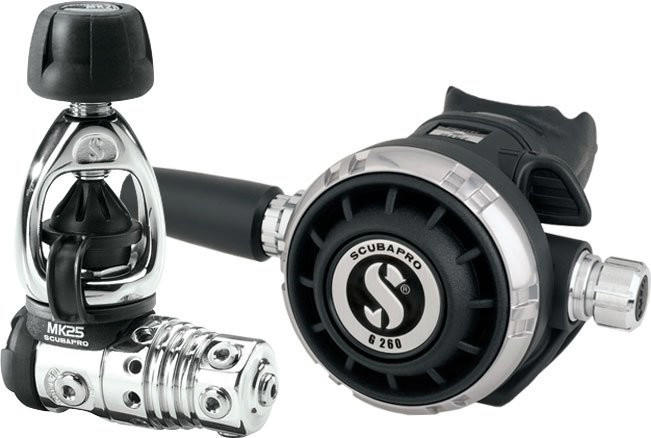
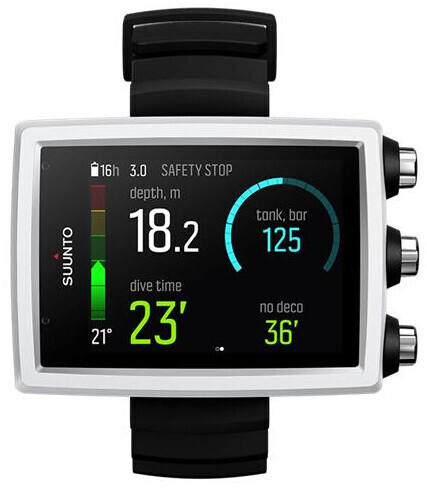

Balanced vs unbalanced
Balanced regulators provide consistent air flow regardless of tank pressure, making them ideal for deep divers or those who plan long dives. One example of a high-quality balanced regulator is the SCUBAPRO MK25 EVO/S620 Ti. It features a balanced piston first stage that ensures constant and reliable air delivery. Another option is the Apeks XTX50 DST, which includes an environmentally sealed balanced diaphragm design, providing excellent performance in cold water conditions.
On the other hand, unbalanced regulators are simpler in design and more affordable, making them a popular choice for beginners or casual divers. Despite the potential decrease in performance at low tank pressures, they are still suitable for recreational diving within recommended depth limits. An example of a reliable unbalanced regulator is the Cressi AC2 Compact, perfect for entry-level divers who prioritize simplicity and cost-effectiveness. Another option is the Aqua Lung Calypso, known for its ease of use, durability, and affordable price point.
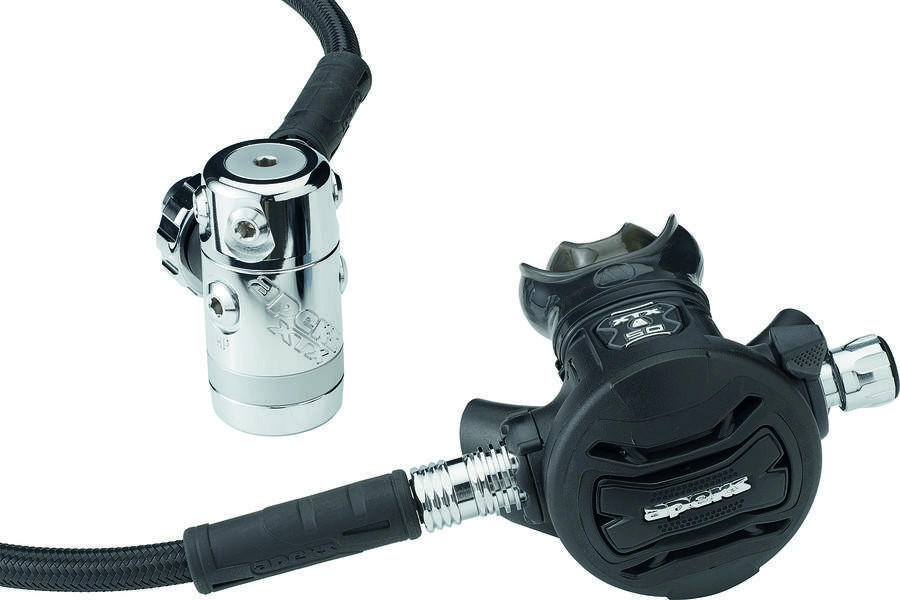


In summary, the choice between balanced and unbalanced regulators ultimately depends on your diving needs and budget. If you plan on conducting deeper or more intensive dives, investing in a balanced regulator like the SCUBAPRO MK25 EVO/S620 Ti or the Apeks XTX50 DST is highly recommended. However, if you are a beginner or prefer diving within recreational limits, opting for an unbalanced regulator such as the Cressi AC2 Compact or the Aqua Lung Calypso can be a smart and cost-effective choice.



Environmental sealing
Environmental sealing refers to the ability of the equipment to prevent the entry of water, contaminants, and freezing temperatures. Look for regulators and octopuses that have high levels of environmental sealing, such as those that are specifically designed for cold water or that feature sealed first stages.
One popular option in the market is the Scubapro MK25 EVO/S620Ti, which offers excellent environmental sealing. This regulator features a balanced piston technology that delivers consistent performance regardless of dive conditions. It is environmentally sealed to protect against water and other contaminants, allowing for optimal durability and functionality. Another great choice is the Atomic Aquatics M1, which is also highly regarded for its environmental sealing capabilities. It utilizes a sealed and balanced piston for trouble-free performance even in extreme diving conditions. Additionally, the Apeks TX40 Regulator is a budget-friendly option that offers environmental sealing to protect against cold water. This regulator is excellent for divers operating in chilled dive environments and is designed to prevent freezing in cold water temperatures.

DIN vs yoke
DIN regulators provide a more secure and reliable connection, as they screw directly into the valve of the tank. This reduces the risk of the regulator coming loose during a dive, particularly at high pressures. Additionally, DIN regulators are generally preferred by technical divers due to their higher sealing capabilities. Some examples of popular DIN regulators and octopuses include the Scubapro MK25 EVO and Aqualung Legend LX series. These regulators are known for their excellent performance and durability. They have features like balanced first stages to ensure consistent air flow and adjustable airflow rates to cater to individual diver preferences. The Mares Rover 2S and Cressi AC2 series are good options for divers looking for a high-quality yoke regulator and octopus. These regulators are designed to be compact and lightweight, making them perfect for travelers or those with limited storage space.
Swivel attachment
A swivel attachment allows the regulator hose to move freely, reducing the risk of mouth fatigue and keeping the hose streamlined for better comfort and performance. A great example of a regulator with an excellent swivel attachment is the Scubapro MK25 EVO/A700 regulator. It features a high flow rate, thanks to its balanced diaphragm design, and comes with a 360-degree swivel attachment that offers easy hose routing. Another option to consider is the Aqualung Legend LX Supreme regulator. This regulator is equipped with a swivel turret that allows for 360-degree rotation, making it easy to position the hose for maximum comfort and flexibility. Both of these regulators provide fantastic swivel attachments, ensuring a more enjoyable diving experience while maintaining optimal performance.

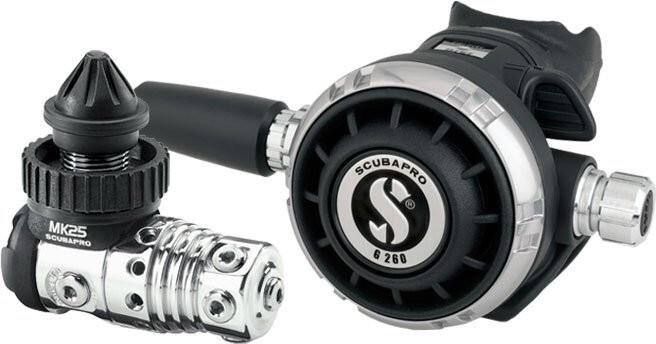
Hose length
The length of the regulator hose determines the range of motion and freedom underwater, as well as the ability to comfortably share air with a buddy. While most diving regulators come with standard hose lengths, some models offer options for different hose lengths to suit individual preferences.
In the market, you can find regulators and octopuses with hose lengths ranging from 26 inches to 40 inches. The Atomic Aquatics Z3 regulator features a 32-inch hose, offering a balanced airflow and flexibility for comfortable diving. Another option is the Scubapro MK25 Evo/S620Ti regulator with a 30-inch hose, designed to provide exceptional breathing performance. If you prefer a longer hose, you may consider the Aqualung Legend Supreme octopus with a 40-inch hose, enabling easy sharing of air in emergency situations.
It's worth noting that longer hoses offer increased range of motion and flexibility, ideal for technical and cave diving, while shorter hoses are common in recreational diving scenarios where buddy sharing is less likely to occur. Ultimately, selecting the hose length that best suits your diving style and needs is essential for a safe and enjoyable diving experience.
Weight
A lightweight regulator can improve your diving experience by reducing fatigue and increasing maneuverability underwater. One highly recommended regulator in terms of weight is the 'Aqua Lung Core LX Supreme Octopus'. Weighing just 9.6 ounces and built with advanced lightweight materials, this octopus provides exceptional breathing comfort without sacrificing durability. Another option is the 'Scubapro MK25 EVO/A700 Carbon Black Tech', designed specifically for technical divers who value a lightweight setup. Weighing in at only 25.6 ounces, this regulator features a carbon fiber barrel and titanium components, making it incredibly light while maintaining impressive performance. Additionally, the 'Mares Abyss 22 Navy II Regulator' is specially designed for demanding dives such as cold water or extreme depths. Weighing 44.4 ounces, it offers a robust and reliable system for divers who prioritize durability.

Comfort mouthpiece
A comfortable mouthpiece can significantly enhance your diving experience by reducing jaw fatigue and providing a snug fit. Look for regulators that feature a soft silicone, orthodontic mouthpiece that adapts to the shape of your mouth. One exemplary product is the Aqua Lung Core ACD Yolk Regulator. Its ergonomic mouthpiece is designed to provide a comfortable bite and prevent jaw fatigue, ideal for extended diving sessions. Similarly, the Scubapro MK2 Plus R195 Octopus offers a user-friendly mouthpiece design with a smooth and supple silicone material, ensuring exceptional comfort during your dives.
Consider grouping products into different categories or segments based on their intended use:
Beginner/Recreational Regulators:
- Mares Rover 15X First Stage Regulator with its ergonomic mouthpiece provides comfort for entry-level and recreational divers.
Technical/Advanced Regulators:
- Apeks DST First Stage Regulator offers a comfortable mouthpiece, balanced design, and high performance suitable for technical divers.
Budget-friendly Regulators:
- Cressi XS2/AC2 Regulator features a comfortable and affordable mouthpiece, perfect for those on a budget.


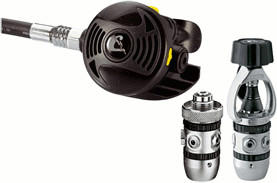
By considering the comfort of the mouthpiece and exploring various options, you can find the best diving regulator and octopus that suits your needs and ensures a comfortable and enjoyable dive.
Adjustability
The regulator should have adjustable dive/pre-dive settings and provide various options to customize the airflow to suit your individual needs. One such product that offers great adjustability is the Scubapro MK25 EVO/A700. This regulator features an adjustable inhalation control knob, allowing divers to adjust the airflow to their preference. Additionally, the A700 second stage offers a diver-adjustable breathing resistance control, enabling divers to fine-tune the regulator's performance based on their breathing patterns. Another excellent option is the Atomic Aquatics T3, which has an adjustable dive/pre-dive switch for controlling the inhalation effort and fine-tuning the airflow. These regulators provide divers with the flexibility to optimize their gear for maximum comfort and breathing efficiency.


Breathing resistance
This refers to the effort required to inhale and exhale while underwater. Low breathing resistance translates to easier breathing and less fatigue during longer dives. For divers seeking a regulator with excellent breathing characteristics, the Aqua Lung Legend Supreme Regulator is a top choice. With a first stage balanced diaphragm design and an innovative venturi lever, this regulator offers both comfort and performance. Another option with exceptional breathing resistance is the Scubapro MK25 EVO/S620Ti Regulator. Its precision-machined titanium open-face first stage significantly reduces resistance, while the balanced system delivers consistent airflow regardless of depth or tank pressure. Both of these regulators offer superior breathing resistance to enhance the diving experience.


Performance in cold water
Coldwater diving requires regulators that can withstand low temperatures without any deterioration in performance. One excellent example of a regulator specifically designed for coldwater diving is the Apeks MTX-R Dive Regulator. This regulator boasts an over-molded first stage end cap and environmental sealing, making it suitable for extreme coldwater diving. Another option is the Scubapro MK25 EVO/S600 Regulator, which features an insulated coating and a balanced diaphragm design, ensuring great anti-freezing capabilities in cold water. These regulators are both recommended choices for those looking to explore coldwater dive sites.


Performance at depth
This factor determines how well the gear performs as you descend deeper and the pressure increases. It is important to look for regulators and octopuses that have been tested and approved for deep diving to ensure reliable performance and safety underwater.
One excellent product that excels in performance at depth is the Scubapro MK25 EVO/A700 regulator. Utilizing a balanced diaphragm first stage, this regulator delivers consistent airflow even at greater depths. It is certified for use in cold water and provides excellent breathing sensitivity, so you can effortlessly enjoy your dives across different depths without any disruptions.


For those seeking budget-friendly options, the group of intermediate regulators offers remarkable performance at depth as well. One such regulator is the Aqua Lung Calypso Classic, which provides a steady flow of air even in extreme conditions. With its durable design and reliable performance, it is a suitable choice for divers exploring various depths without breaking the bank.

Depth gauges
One excellent option to consider is the Cressi Mini Depth Gauge. This compact and lightweight depth gauge offers precise readings up to 70 meters (230 feet) and features luminescent dials for easy visibility in low-light conditions. Another great choice is the Suunto CB One Module, which is compatible with Suunto’s consoles and comes with a maximum display depth of 150 meters (500 feet). This robust depth gauge also incorporates temperature compensation to provide consistent and reliable readings in any diving environment.
In terms of segmentation, depth gauges for scuba diving can be grouped into analog and digital options. Analog depth gauges, such as the Aqua Lung Depth Gauge Console, provide divers with a straightforward and easy-to-read depth display using a needle and analog dial. On the other hand, digital depth gauges like the Mares Quad Air Dive Computer offer digital screens that provide divers with comprehensive depth information in addition to other important dive data. Both analog and digital depth gauges have their own advantages, so selecting the right one depends on the individual diver's preferences and diving needs.
Overpressure relief valves
When choosing diving regulators and octopuses, one crucial factor to consider is the presence of overpressure relief valves. These valves are designed to provide a fail-safe mechanism, protecting divers from potentially dangerous situations caused by a malfunctioning regulator or an unexpected surge in pressure. Picking products with reliable overpressure relief valves ensures enhanced safety during diving.
One example of a diving regulator with an efficient overpressure relief valve is the Aqua Lung Titan LX Supreme. This regulator boasts a patented Auto-Closure Device (ACD) that seals the inlet automatically when the regulator is removed from the cylinder valve, preventing contaminants from entering. It also includes an overpressure relief valve that releases excess pressure from the first stage during certain emergency scenarios.
Another notable option is the Scubapro MK25 Evo/S600; renowned for its high-performance capabilities, this regulator utilizes a balanced diaphragm design featuring an overpressure relief valve. This valve sits on the high-pressure port and is pneumatically-controlled, which efficiently reduces the risk of valve seat erosion and is capable of handling prolonged usage in a variety of diving conditions.
Both the Aqua Lung and the Scubapro regulators exemplify the importance of overpressure relief valves in ensuring divers are provided with a reliable and safe breathing apparatus.
Communication systems
A good communication system allows divers to stay in touch underwater, enhancing safety and coordination. One particular product that stands out is the Ocean Reef Neptune Space G.divers Full Face Mask. This mask includes a surface air valve for easy communication with the surface and internal speakers for clear communication underwater. Another option is the Shearwater Teric Dive Computer, which incorporates wireless Bluetooth technology to connect with a variety of optional accessories. These accessories include the AI capable transmitters that wirelessly transmit tank pressure data to the Teric dive computer, ensuring accurate and reliable information at all times. Considering communication systems like these will greatly enhance the diving experience and promote effective communication underwater.
Nitrox compatibility
Nitrox is a popular breathing gas mixture used by many divers, which combines oxygen and nitrogen in different proportions than regular air. Not all regulators are designed to handle higher oxygen concentrations found in Nitrox, so it's crucial to choose a regulator that is compatible.
One great option for Nitrox divers is the Aqua Lung Mikron ACD Regulator. This regulator is specifically designed for use with Nitrox up to 40% oxygen content. It features a balanced diaphragm first stage with dry ambient pressure chamber (ACD) to prevent water entrance, corrosion, and freezing. The second stage is pneumatically balanced for smooth and effortless breathing. Another excellent choice is the Scubapro MK25 EVO/S600 Regulator, which also offers Nitrox compatibility up to 40% oxygen content. The MK25 Evo first stage delivers excellent performance and includes an environmental sealing to safeguard against freezing. The durable S600 second stage provides reliable and comfortable breathing. For divers using high oxygen concentration Nitrox mixes, the Hollis DC7 500SE Regulator is a great option. It is specifically designed for safe use with higher oxygen content, up to 100%. The first stage has an environmental sealing kit to prevent internal corrosion, while the second stage features a pneumatically balanced demand valve for increased performance.


Integrated alternate air source
An integrated alternate air source refers to an extra second stage that is connected to the whole regulator system, allowing you to provide air to your buddy in an emergency situation.
One example of a diving regulator with an integrated alternate air source is the Aqua Lung Legend LX Supreme Regulator. It comes with an Octo and a larger diaphragm for better breathing, offering high performance and ease of use. Additionally, the ScubaPro MK17 Evo Regulator is another option that stands out with its balanced diaphragm mechanism, making it SILVER SCUBAPRO labeled. It also incorporates an integrated alternate air source and provides smooth and effortless breathing to the diver.
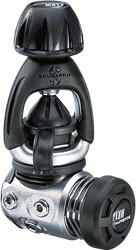
These examples showcase the availability of diving regulators with integrated alternate air sources, ensuring the safety and peace of mind of any diver. It is essential to consider such features when making a purchasing decision, as they offer a reliable option in emergency situations.
Type of mouthpiece
There are two main types of mouthpieces commonly found in diving regulators: standard mouthpieces and orthodontic mouthpieces.
Standard mouthpieces are the most common and widely used mouthpieces in diving regulators. They are designed to fit comfortably in most divers' mouths and provide a secure seal. An excellent example of a regulator with a standard mouthpiece is the Atomic Aquatics T3 Regulator, which features a patented high-flow second stage with a comfortable and durable mouthpiece.
On the other hand, orthodontic mouthpieces are specifically designed for divers with braces or jaw issues. These mouthpieces have a unique shape that accommodates dental appliances, providing a comfortable fit without interfering with braces. For divers in need of an orthodontic mouthpiece, the Scubapro MK25 EVO S620 Ti Dive Regulator is a great option. It comes with an ortho mouthpiece design for enhanced comfort and a more secure fit.
When it comes to octopuses, the same type of mouthpieces can be found. A popular choice for divers is the Aqua Lung ABS Octopus, which features a standard mouthpiece for easy and comfortable use, along with a reliable and high-performance second stage. For divers with specific needs, the Mares Carbon Octopus provides an orthodontic mouthpiece for a customized fit and maximum comfort.

In summary, when selecting a diving regulator and octopus, consider the type of mouthpiece that suits your needs, whether it be a standard mouthpiece or an orthodontic mouthpiece for divers with braces or jaw issues. The Atomic Aquatics T3 Regulator and Scubapro MK25 EVO S620 Ti Dive Regulator are great examples of regulators with standard and orthodontic mouthpieces respectively, while the Aqua Lung ABS Octopus and Mares Carbon Octopus offer similar choices for octopuses.
Hose routing options
This refers to how the hoses are routed from the first stage to the second stage and octopus, ensuring comfort and minimizing entanglement risks.
Some regulators offer a standard hose routing configuration, where the primary and alternate second stage are mounted on the right side and the low-pressure inflator hose is on the left side. For example, the Scubapro MK25 G260/270 regulator set features this hose routing option.
Other regulators provide a reversible hose routing configuration, allowing divers to switch the routing from right to left or vice versa. This gives flexibility to divers who prefer an alternate setup. A great example is the Apeks MTX-R regulator, which offers a reversible hose routing configuration to accommodate different preferences.
It's worth noting that some regulators have upgraded hose routing options, such as swivel hoses that enhance hose movement and minimize jaw fatigue. The Atomic T3 regulator stands out in this regard, with its patented Atomic T3 swivel hose that increases comfort and agility underwater. Fun fact: the Atomic T3 is also the lightest regulator on the market, weighing just 38 ounces!


The choice of hose routing option boils down to personal preference and diving needs. Whether it's a standard, reversible, or swivel hose routing configuration, there are numerous high-quality regulators available in the market to suit each diver's preference.
Size and weight
A compact and lightweight regulator is desirable as it reduces drag underwater and makes diving more comfortable. For those looking for a compact option, the Scubapro MK2 EVO/R195 regulator is an excellent choice. With a weight of just 22.6 oz, it is one of the lightest regulators available. Similarly, the Aqua Lung Calypso regulator weighs only 28 oz and is designed for divers who prefer a light and streamlined setup.
For divers who prioritize portability, the Atomic Aquatics ST1 regulator fares well as it is both small and light, weighing in at only 24.9 oz. Another option for those seeking a lightweight regulator is the Cressi MC9 Compact which weighs only 25.16 oz. Overall, these regulators offer a compact and lightweight design without compromising on performance.


Maintenance requirements
Some products on the market may require more frequent maintenance and servicing than others, depending on their design and features. For instance, the Aqua Lung Calypso Classic Regulator is known for its simple and hassle-free maintenance. It features a pneumatically balanced second stage that provides smooth and reliable breathing performance. Additionally, the Atomic Aquatics B2 Regulator is constructed with high-quality materials and boasts a black-PVD finish, making it not only exceptionally durable but also resistant to corrosion, resulting in less need for maintenance. Another option worth considering is the Mares Abyss 22 Navy II Regulator that is specifically designed for extreme diving conditions and requires less maintenance, thanks to its design that prevents the entry of pollution or debris. These products highlight the varying levels of maintenance requirements of different regulators and octopuses in the market.


Interchangeability of parts
Interchangeability refers to the ability to mix and match parts from different brands or models, providing flexibility and convenience in case of repairs or replacements. Some regulators and octopuses on the market are known for their high level of interchangeability, allowing divers to easily find and swap out compatible parts.
For example, the Aqua Lung Calypso Classic regulator is designed with universal parts, making it compatible with many other models within the Aqua Lung range. This means divers can easily find replacement parts for this regulator and interchange them with other compatible Aqua Lung models. Another brand that offers great interchangeability is Scubapro, known for their high-quality diving equipment. The Scubapro MK25 EVO regulator offers compatibility with a wide range of parts, allowing divers to customize their kit to suit their preferences. These are just a few examples of regulators and octopuses that prioritize interchangeability of parts, providing divers with peace of mind knowing they can find compatible replacements easily.

Type of diving activities
For recreational divers who primarily engage in warm-water diving, a balanced piston first stage regulator like the Aqua Lung Legend LX ACD is an excellent choice. This regulator offers excellent breathing performance, with a balanced second stage providing effortless inhalation and a pneumatically balanced leed valve for optimum performance. Another option for warm-water diving is the Scubapro MK25 EVO A700, which features a corrosion-resistant chrome-plated marine brass body and a titanium barrel for maximum durability.
For divers planning on venturing into colder waters or engaging in technical diving, a cold-water-rated regulator is essential. The Atomic Aquatics T3 is a top-rated regulator suitable for both warm and cold-water diving. It is constructed with high-quality materials such as Lightweight Titanium, providing excellent corrosion resistance even in harsh conditions. Another popular choice for cold-water diving is the Seac DX200, which is designed to handle extreme temperatures with its balanced diaphragm first stage and environmental dry-sealed second stage.
It's important to note that there are different products in the market catering to different diving activities and their respective requirements. For professional divers who are often engaged in deep dives or cave diving, regulators with additional features such as environmental sealing and high-performance materials would be ideal. Some examples of these advanced regulators include the Scubapro MK25 EVO Black Tech and the Apeks Black Ice.
Understanding the type of diving activities you will be participating in will help you choose the best regulator and octopus to suit your needs. Whether it's warm-water recreational diving or cold-water technical diving, there are specific regulators tailored to deliver optimal performance and safety in each situation.
Travel-friendly design
This feature becomes particularly crucial for divers who frequently travel to different diving locations or go on dive trips. Travel-friendly regulators are lightweight, compact, and easy to carry, making them ideal for travel purposes.
Certain regulators stand out in terms of their travel-friendly design. Among them, the ScubaPro MK25 EVO/S620 Ti regulator is an exceptional choice. This regulator weighs just 28 ounces and features a compact first stage design that allows for easier packing and transportation. Another excellent option is the Aqua Lung Mikron regulator, which at just 23.9 ounces is even lighter. This regulator boasts a small and lightweight second stage, making it an ideal choice for divers looking for a travel-friendly diving equipment.
When prioritizing a travel-friendly design, it is essential to look for regulators that are lightweight, compact, and easy to carry without compromising on performance or safety.
Ease of use
It is essential to find products that are user-friendly and can be easily operated by both seasoned divers and beginners. A great example of a diving regulator that offers ease of use is the Aqua Lung Legend LX Supreme ACD Regulator. With its auto-closure device (ACD) feature, it prevents water from entering the first stage, reducing the risk of corrosion and making it easier to maintain. Additionally, it has a balanced diaphragm design, offering consistent performance throughout the dive. For an octopus that prioritizes ease of use, the Scubapro R195 Octopus is worth considering. It features a downstream valve that opens effortlessly, allowing for smooth and reliable breathing underwater. Its yellow hose is also easily distinguishable, ensuring quick and hassle-free identification in any emergency situation.

Compactness
A compact regulator is lightweight and easy to travel with, making it ideal for divers who frequently explore different diving destinations. One such example is the Aqua Lung Mikron Compact Regulator, which weighs only 26 ounces and is designed with a smaller first stage resulting in a 2.6-inch diameter. This compact size allows divers to effortlessly maneuver underwater while minimizing potential drag and preventing accidental damage. Similarly, the Scubapro MK17 EVO/A700 Black Tech Regulator is another great option known for its compact design. It offers excellent breathing performance and includes a compact second stage that enhances mobility deep underwater. For added convenience, it also features an optional lightweight techno-polymer barrel that significantly reduces weight without compromising durability.
Durability
Look for regulators and octopuses made of high-quality materials such as stainless steel or chrome plated brass, as they provide superior corrosion resistance, increasing their lifespan. For example, the Scubapro MK25 EVO/A700 regulator is known for its exceptional durability due to its corrosion-resistant first stage and stainless steel second stage. Another option is the Apeks DST regulator, designed with a durable, chrome plated brass body for reliable performance in harsh conditions. These regulators are excellent choices for divers looking for dependable equipment that can withstand the wear and tear of prolonged underwater use.


Authorized service centers
Authorized service centers play a crucial role in maintaining the integrity and reliability of your diving gear, as they adhere to specific standards and protocols set by the manufacturer. By opting for a regulator or octopus that has authorized service centers, you can rest assured that your equipment will receive proper maintenance and repair when needed, ultimately ensuring your safety underwater.
For example, in the high-end scuba diving regulators segment, brands like Scubapro MK25/S600 and Apeks XTX50 DST have a network of authorized service centers across different regions. These regulators are known for their outstanding performance and build quality, and the availability of authorized service centers further enhances their appeal. In the mid-range segment, Atomic Aquatics Z3 and Zeagle F8 are other examples of regulators that boast dependable authorized service centers. Remember, when inquiring about authorized service centers, ensure that they are up-to-date and accommodate the specific regulator or octopus you are interested in.

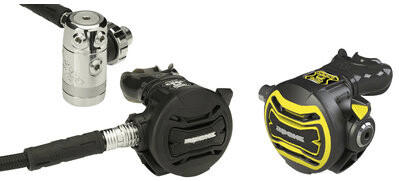
User experience level
Beginners will benefit from regulators that are easy to use and provide reliable performance. One such product is the Scubapro MK2 Evo regulator, which features a balanced first stage and pneumatically balanced second stage for consistent airflow. It also offers a compact and lightweight design, making it perfect for novice divers. Another great option for beginners is the Aqua Lung Calypso regulator, which is known for its simplicity and durability.
Intermediate and advanced divers may prefer regulators that offer more advanced features and adjustability. The Apeks XTX50 is a popular choice among divers with experience, thanks to its adjustable breathing resistance and excellent cold-water performance. For those seeking top-of-the-line regulators, the Atomic Aquatics T3 is a highly regarded option. It offers an all-titanium construction, which provides corrosion resistance and is extremely lightweight. Additionally, its high-performance second stage delivers effortless breathing.

In summary, when considering the user's experience level, it is important to choose diving regulators and octopuses that match their skill set. Beginner divers can benefit from products such as the Scubapro MK2 Evo and Aqua Lung Calypso, while intermediate and advanced divers can explore options like the Apeks XTX50 or Atomic Aquatics T3 for more advanced features and superior performance.

Price
It is important to find a balance between a competitive price and the quality of the product. While there are numerous options available, two diving regulators that stand out in the market are the 'Aqua Lung Core Regulator’ and the 'Atomic Aquatics T3 Regulator’. The Aqua Lung Core Regulator offers exceptional reliability and performance at an affordable price point. It features a balanced diaphragm design, which allows for consistently high-quality air delivery. On the other hand, the Atomic Aquatics T3 Regulator is a top-tier option but comes at a higher price. It boasts precision-machined components, titanium materials, and a lightweight design that enhances comfort and reduces jaw fatigue during dives. Despite the higher price tag, the T3 Regulator offers unparalleled durability and performance which make it a great investment for experienced divers.
Variety of brands
Different brands have their own unique features and specifications that can greatly affect the performance and reliability of the equipment. Some popular brands in the diving industry include Aqualung, Scubapro, and Mares.
Aqualung regulators, such as the Aqualung Legend LX Supreme, are known for their innovative design, excellent airflow performance, and resistance to freezing. They are built with advanced technologies like the Auto Closure Device (ACD) system, which prevents water from entering the first stage. On the other hand, Scubapro offers reliable and highly regarded regulators like the Scubapro MK25 EVO/A700. These regulators provide consistent airflow, high-quality construction materials, and efficient heat exchange capabilities. Mares is another brand that produces top-notch diving regulators such as the Mares Abyss 22 Dive Regulator. The Abyss line is praised for its robustness, including a Twin Power System that allows for personalized breathing adjustment.



It is important to note that the pros and cons of particular brands can be subjective and vary depending on individual preferences and diving needs. Additionally, the above-mentioned brands offer various models and product lines to cater to specific segments of divers, ranging from beginners to advanced technical divers. Researching and evaluating the specifications and features of different brand offerings can greatly help in choosing the best regulator and octopus that meet your diving requirements.